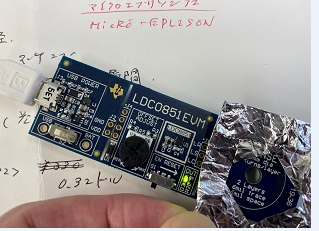Thank you very much for your help.
I would like to connect a 90mm diameter sensor coil to the LDC0851EVM.
I would like to connect a 90mm diameter sensor coil to the LDC0851EVM and have it detect an object even if it is a target (mold) with a hole.
The mold should be more than 300mm2 in size and have a 50-80mm hole in the center.
In the LDC target design section 3, there is a description of the case where the target is deformed, but please tell me how to design the sensor coil.
Please let me know how to design the sensor coil. If you have any examples like this one, please let me know.
Thank you very much for your cooperation.
Translated with www.DeepL.com/Translator (free version)


